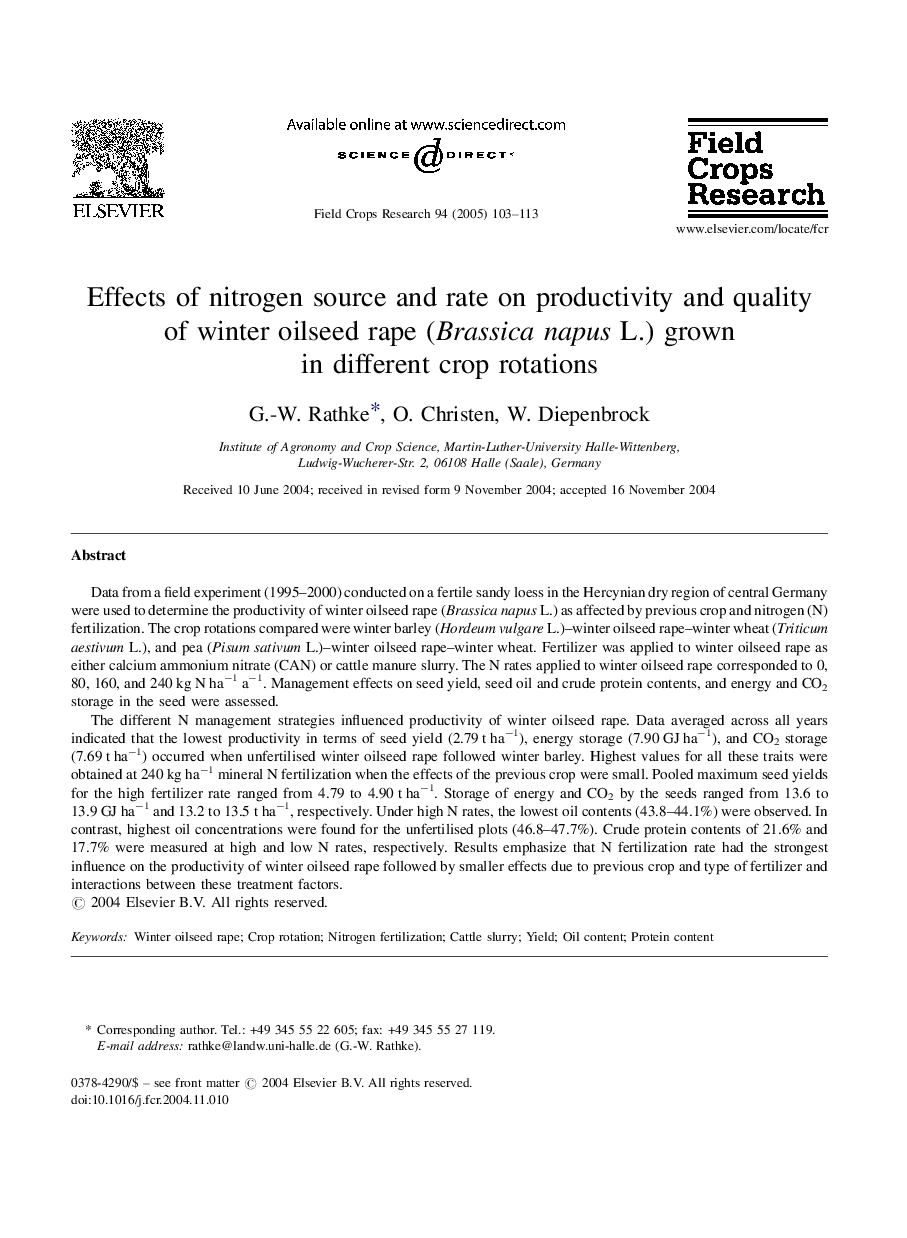| Article ID | Journal | Published Year | Pages | File Type |
|---|---|---|---|---|
| 9473503 | Field Crops Research | 2005 | 11 Pages |
Abstract
The different N management strategies influenced productivity of winter oilseed rape. Data averaged across all years indicated that the lowest productivity in terms of seed yield (2.79 t haâ1), energy storage (7.90 GJ haâ1), and CO2 storage (7.69 t haâ1) occurred when unfertilised winter oilseed rape followed winter barley. Highest values for all these traits were obtained at 240 kg haâ1 mineral N fertilization when the effects of the previous crop were small. Pooled maximum seed yields for the high fertilizer rate ranged from 4.79 to 4.90 t haâ1. Storage of energy and CO2 by the seeds ranged from 13.6 to 13.9 GJ haâ1 and 13.2 to 13.5 t haâ1, respectively. Under high N rates, the lowest oil contents (43.8-44.1%) were observed. In contrast, highest oil concentrations were found for the unfertilised plots (46.8-47.7%). Crude protein contents of 21.6% and 17.7% were measured at high and low N rates, respectively. Results emphasize that N fertilization rate had the strongest influence on the productivity of winter oilseed rape followed by smaller effects due to previous crop and type of fertilizer and interactions between these treatment factors.
Keywords
Related Topics
Life Sciences
Agricultural and Biological Sciences
Agronomy and Crop Science
Authors
G.-W. Rathke, O. Christen, W. Diepenbrock,
